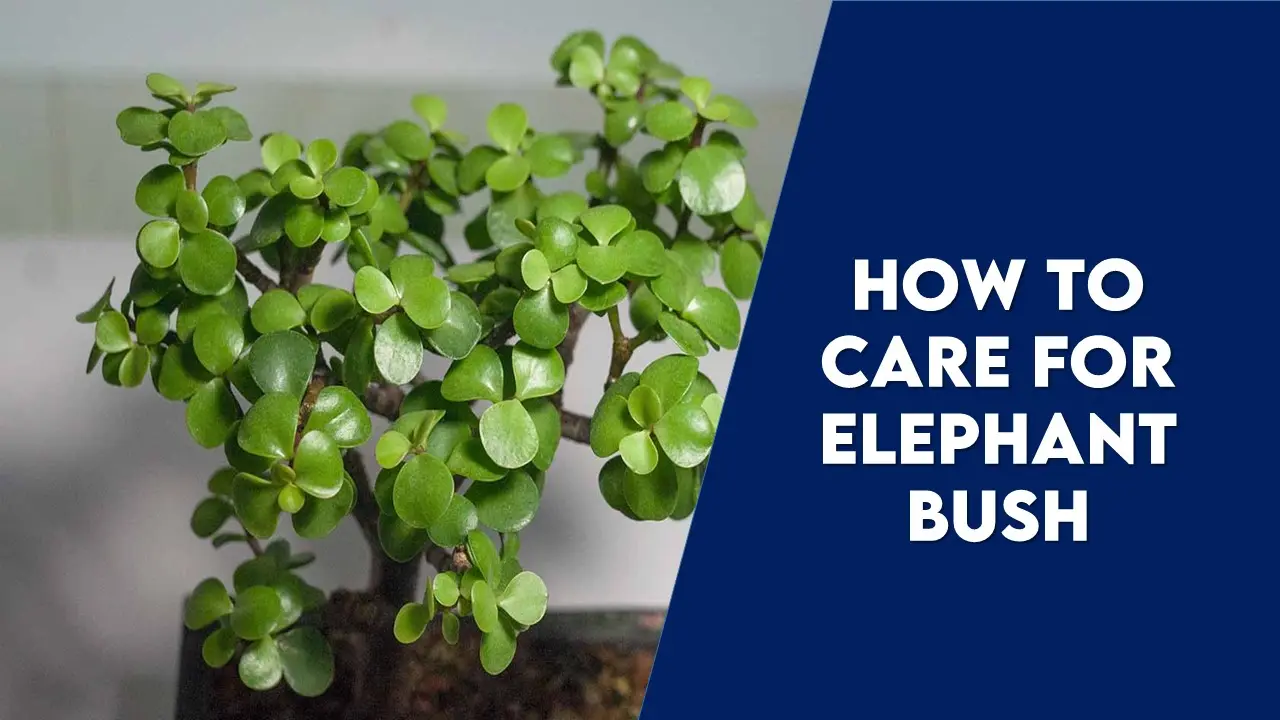How to Care for Elephant Bush: The Ultimate Guide
If you are a succulent enthusiast, then you must have heard of Elephant Bush or Jade Plant before. Being adaptable to most climatic conditions, it is cultivated all across the world for potting or hanging basket purposes, though it is also well-fitting for small table pots and indoor conditions. Interestingly, people have utilised this charming succulent for making Bonsai as well.
Elephant Bush is a plant of few needs and satisfying results. To add this succulent to your garden, let us know about how to care for Elephant Bush and ways to get the desired results.
Under no interference the plant can grow up to fifteen feet, it has round shiny leaves and the stem is softwood. Surprisingly, it is edible and used as a salad dressing in Africa. Elephant Bush has shown many medicinal properties. Not only that, it also acts as a Carbon Sponge, it absorbs as much Carbon from the atmosphere as a Mangrove tree does.
It has a close relationship with Elephants, from which it got this name. In the wild, Elephants eat the plant and leave the lower twigs and a few broken twigs around it, the plant grows back and the fallen twigs bear the roots and grow up to the same height as the previous plant, hence it becomes even more bushier than before. Not only Elephants, but most herbivores have a special liking of this plant.
| Common Name | Elephant Food, Dwarf Jade, Porkbush, Speckboon, etc. |
| Scientific Name | Portulacaria afra |
| Family | Portulacaceae |
| Plant Type | Perennial |
| Origin | Africa |
| Hardiness Zone(USDA) | 9-11 |
| Height | 8-15 Feet in the wild and up to 3 feet in pots or indoors. |

How to Care for Elephant Bush: General Requirements
Light
Like many other succulents, Elephant Bush thrives best in full and filtered sunlight. It can be grown in partial shade but it will not thrive best in such conditions. At most, six hours of direct sunlight in a day, is best for the overall plant growth. In non-native regions it may face sunburning, so light requirements must be monitored in such cases and if the plant receives excessive sunlight then it must be immediately kept in shade.
Temperature
The Elephant Bush can tolerate a minimum of 55ºF and a Maximum of 85ºF temperature. Though it can survive in varied ranges of geographical locations, it is extremely sensitive to frost and will die if the temperature drops below 5°C. In addition to that, this succulent is extremely sensitive to temperature fluctuations and may experience shock if it happens.
Humidity
Humidity requirement has an inverse relationship with water requirements. The more the humidity, the less will be the watering needs. Succulents grow well in medium to low humid conditions but high humidity can cause leaf drop in the succulent.
Soil
Elephant Bush can be grown in a wide range of soil pH, from slightly acidic to mild basic; it shows no particular difference(5.6-7.8). As it is native to desert areas, a well-drained, nutrient-rich and a little sandy soil will show excellent results. The only bottleneck in considering soil conditions is that it is susceptible to waterlogged conditions. Adding vermiculite and organic matter can help in improving the soil properties of the succulent.
Water
Although this succulent is drought tolerant and requires a small amount of watering, its requirements differ for each season, it must be watered when the upper few inches of soil become completely dry, frequent irrigation should be avoided in winters and more doses in summer will lead to lushier green leaves. One must remember Elephant Bush doesn’t enjoy having wet feet for a longer time, which means waterlogged conditions must be avoided.
Pruning
Without pruning Elephant bushes can grow disorderly and cover all the empty areas around them. And it should be only done during summer as it is the active season for plant activities. Pruning at any other time of the year can cause permanent damage to the plant and increase the chances of disease infestations. All the pruned plants can generate again, hence those plant parts could be used. The heavy branches of the plant may fall on their own, so it is better to prune these branches.
Flowering
Spekboom flowering of Elephant Bush is rare, it may bear pink-white flowers in clusters at the end of the stem after years of cultivation, or may never flower. But the chances of flowering can be escalated if the environmental conditions are set to be as close to as its natural habitat.
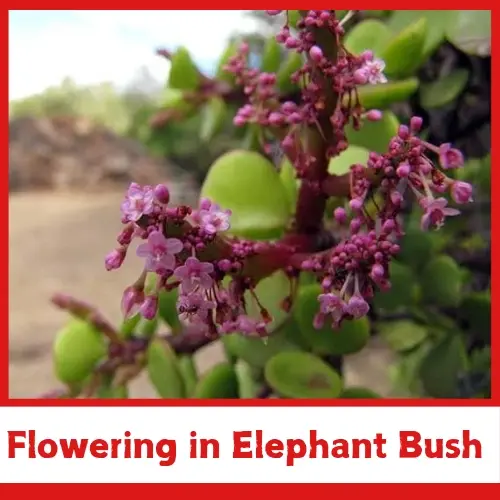
Care for Elephant Bush According to its Uses
For any purpose, the cuttings are more prominently used.
For Pots and Hanging Baskets
Soil mixture
It is best to use Earthen pots rather than plastic or metallic pots, as Earthen pots provide better aeration. The lot must have a hole at the bottom for good drainage. Three types of potting mixture can be used for the potting.
- 20% Soil, 30% Sand, 20% Perlite, 10% Gravel, and 20% Vermicompost.
- 20% Soil, 40% Sand, 30% Vermicompost, and 10% Perlite.
All in all the mixture must be light, well-drained and nutrient-enriched. Make sure, no overflowing of water occurs in your pot. Some soil mixtures are also available in the market that could be directly filled in the pot. Fill only half part of the pot with this mixture, and fill the left part with planting material and water properly.
Fertilizer
It is best to use organic fertilizers, FYM, vermicompost or Manure for increasing nutrients in the soil mix. Water soluble fertilizers can be added in the growing season only, the amount of fertilizer should be half the amount as prescribed, as the Elephant bush already has aggressive growing habits. NPK dose of 5:10:5 is mostly preferred. For good results, apply fertilizer biannually, once in spring and another during fall.
Planting material
It is easy to propagate Elephant Bush from stem cuttings. Dry the planting material for one or two days well before planting in well-drained soil. There is no need to add auxins to stimulate its growth. Just plant it however you want as many types of Elephant bush are available, like the slow-growing variegated Portulacaria, trailing type liks Portulaca afra prostata and mid-stripped rainbow bush-type. These plants have a beautiful range of varieties.
Use only treated material for planting and if obtained from previously grown plants, always use sterilised equipment for cuttings and pruning to avoid any kind of diseases and pests in the plant. Use multiple cuttings for hanging basket purposes.
Placement
Never place freshly potted plants in direct sunlight, increase the sunlight hours with time. The pot must be placed near a south-facing window if grown indoors, to provide maximum hours of sunlight in a day.
Repotting
Repotting is supposed to be done in spring, to establish its root well in the soil before intense heating in summer. It will also allow longer days and enough time to overcome stress and shock from repotting. Elephant Bush experiences a dormant period during winters and may never recover from the shock if repotted in winter.
- Choose a pot that is about two inches bigger than the previous pot with a drainage hole.
- Water the plant about a day or six hours before repotting to reduce stress.
- Carefully remove the plant from the pot along with the soil ball.
- Cut all the dead, or infected roots, if the plant is attached to the pot carefully remove the roots.
- Place the plant at the centre of the pot and fill the pot with the prepared soil mixture, leaving a few centimetres from the brim of the pot so that the mixture won’t flow out during watering.
- Water the pot and place it in a shady place. Don’t put the pot directly under the bright sunlight.
- Give it some time to settle in the pot and then place it the same way you put the other adult plants.
For Bonsai Making
Prepare the soil mixture the same as prepared for the pot. And use a single cutting for making the Bonsai. Add a little FYM and avoid fertilizer application as the Bonsai is supposed to grow in fewer nutrient conditions, so it may grow slowly into a miniature huge bush found in nature.
- In a temperature above 18°C, place the cutting in the centre of the pot.
- The pot used for bonsai must have a proper drainage facility.
- Fill the container with soil mixture. Place it where it will receive indirect and long hours of sunlight.
- Pinching of leaves can be done to reduce the leaf size and losses.
- Allow the plant branches to grow freely for a year.
- Once the offsets grow about ten centimetres in length, guide it with the help of copper wire to grow outwards not upwards. Similarly guide all the side branches followed by pruning.
- Don’t allow the plant to grow more than 25 cm in height, it will turn the regular succulent into a beautiful bonsai.
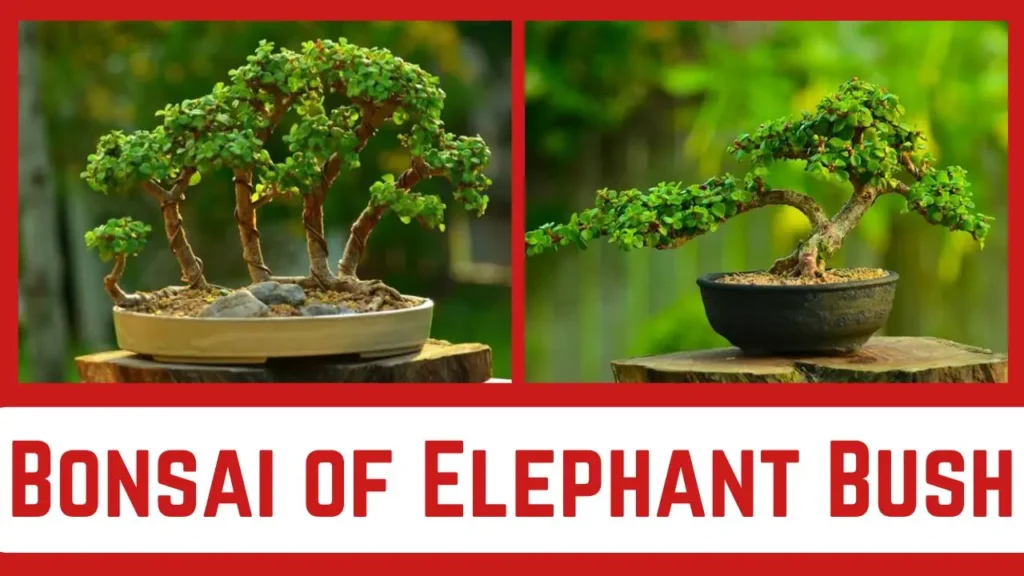
For Outdoor Gardens
It is not a great idea to use Elephant Bush as a ground cover due to its bushy and upright nature. But if it is planted outside then these points should be kept in mind.
- When newly propagated, it is best to let it grow in a pot or nursery until its roots are well established and the plant becomes adaptive to its surroundings.
- Don’t put the plant under direct sunlight.
- Follow frequent watering during summer long days.
- During frost conditions or when the temperature reaches below 10°C.
- Keep the plant away from the reach of animals.
- Place it somewhere where water logging will not occur during rainy days.
Problems in Elephant Bush
Leaf Drop
It occurs due to overwatering, or poor drainage in the soil. In such conditions, monitor watering cycles and drainage. Check for humidity, if it is placed in a humid room use a dehumidifier. If the problem isn’t solved, then change the whole potting mixture.
Yellowing of Leaves
There could be multiple reasons for yellowing:
- Excessive Sunlight
In newly planted cuttings, if exposed to direct sunlight then it may cause yellowing. It may also result in crisping up and leaf fall. Under such conditions put the plant in the shade or in a place where it could receive indirect sunlight.
- Excessive Water
Overwatering and water-logged soil can damage the roots and hence the plant will experience yellowing. In such conditions, check for proper drainage and immediately stop watering the plant.
Wrinkly leaves
This condition arises due to underwatering and might come in association with wilting and leaf drop. This condition is rare but if it happens then check the pot, and water it, if the water flows directly out of the drainage hole then it means the mixture is too light and needs to be changed. Try to add some manure and vermicompost as well.
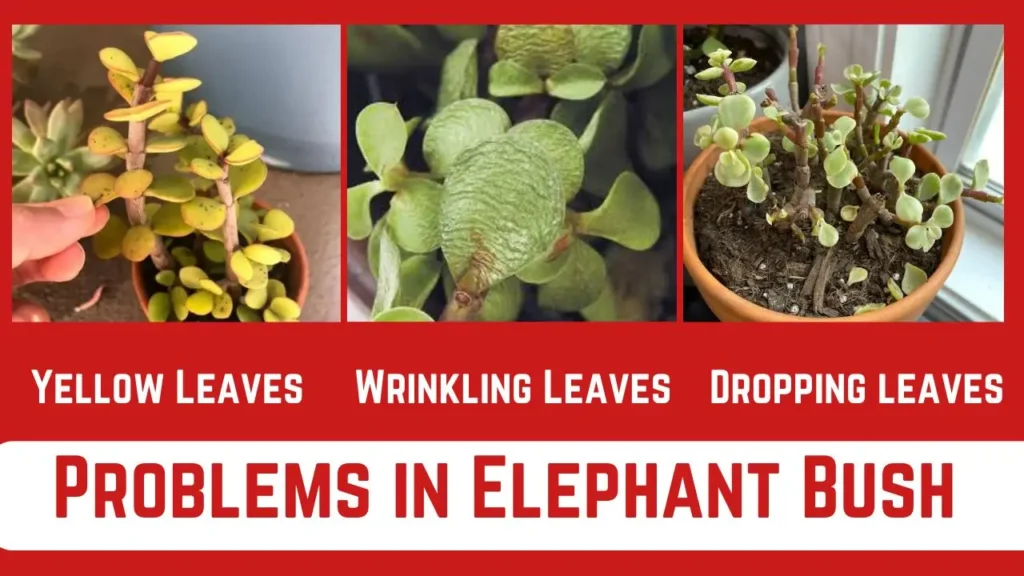
Pest and Diseases
Insects
The only insects that infest this plant are white flies, spider mites, larvae, mealybugs and scale moths. Webbing and biting marks on leaves are the major symptoms in the plant. You can apply neem oil, Azadirachtin to prevent insect infestation or imidacloprid for their management. But apply these in the right amount to avoid toxicity.
Diseases
Diseases that attack leaves are rare in Elephant bush, but these are sensitive to soil-based diseases. Overwatering attracts multiple fungi that may cause the rotting of roots. So diseases can be prevented and managed by providing proper drainage and using correct soil media. Incorporate Chaubatia Paste or Mancozeb in soil media to prevent their further spread and rotting.
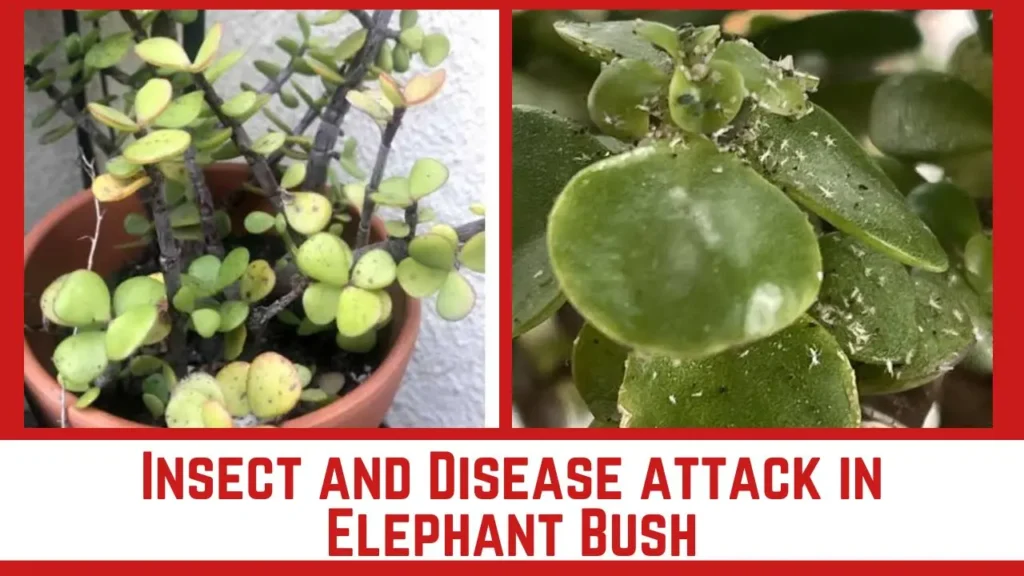
Conclusion
Elephant bush is widely grown succulent for potting and hanging baskets. These typical plants need a little care and a bit of attention from their owners. The succulent freaks have cultivated such a wild and diverse succulent into an aesthetic small home decor plant. With its little needs, you can also multiply or introduce this succulent in your garden or inside your home. Now you know all the stances on ‘‘How to Care for Elephant Bush’ for your planting styles.
Also Read:

